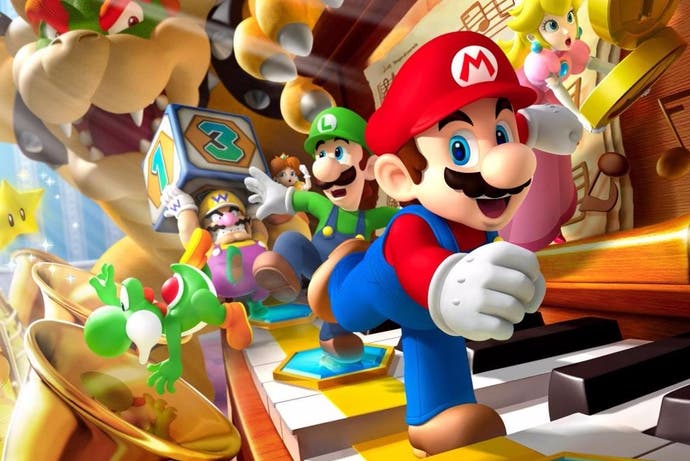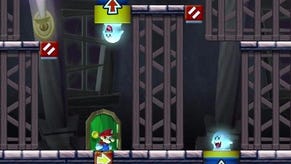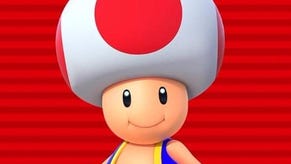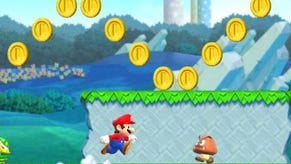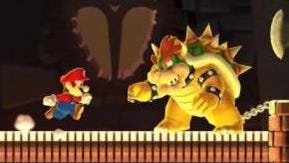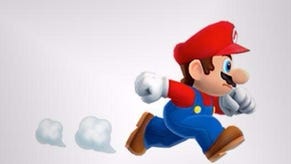Nintendo's 2017: two seismic shifts, and the conundrum that will decide its future
On Switch.
You wouldn't have guessed from its meagre release schedule last year, but Nintendo had a hugely significant 2016. With the baby step of Miitomo that was then followed by Super Mario Run's more sizeable footprint later in the year, its play for mobile finally took shape, while with the announcement of Switch it began the process of consolidating its handheld and home console offerings. These are hardly small matters, but 2017 will be when we finally see how everything falls into place. It's going to be fascinating.
The first point of order, of course, is Switch, due for its full unveiling at the tail-end of next week. By this point there are only a handful of questions remaining - the three-minute reveal trailer gave an overview of the premise, and we now have a good idea of the specs - but we won't get the answer to the big one until after its release in March. Just how exactly will players respond to Nintendo's hybrid?
The early signs are positive. On the surface, the Switch is a much easier sell than the two pieces of hardware that preceded it; the big gimmick is the alluring ability to play big console games on the go, a more straightforward concept than the glassless 3D of the 3DS or the weird asymmetry of the Wii U's GamePad. The ability to play The Legend of Zelda: Breath of the Wild on the move could well prove irresistible, and a portable Skyrim is exciting enough a prospect to make you forget the original is over half a decade old.
But beyond that, it remains to be seen whether Nintendo will be able to get the third-party support it sorely lacked this past generation. The names touted upon the Switch's reveal should be taken with a pinch of salt - getting publishers to agree to appear on a presentation slide is a significantly easier challenge than getting them to actually release software. The promise of playing console games on the move rings hollow if it's not being backed up by the likes of FIFA and Call of Duty, and EA and Activision's response to the Switch will be crucial. Both were on board early on in the Wii U's lifespan before turning away - Call of Duty and FIFA made brief cameos in the console's first Christmas - but after dismal sales, support soon dried up. Now, there seems to be more of a wait-and-see approach, and it'd be a surprise to see the publishers' big guns on Switch early on.
Maybe that doesn't matter so much, given the eternal truth that it's Nintendo's software that sells its hardware, though you've got to hope that Switch is going to get significantly more than the Wii U ports glimpsed in that initial reveal. Remasters are all well and good, especially considering how many big games last generation were left underexposed thanks to the underperformance of the Wii U - and the more people that get to play the brilliant Mario Kart 8 and Splatoon, the better. But Nintendo runs the risk of burning out those who've been most faithful during its fallow period. Even worse, if it sticks to its existing Virtual Console policy of ignoring previous purchases and asking players to buy older games all over again for a new platform, it could finally alienate some of its most passionate fans.
Another set of players who sat out the Wii and Wii U will unlikely be won over by what's shaping up to be another Nintendo console whose power falls short of the current generation's standard - understandable, given its portability, but still a blow to those who wanted to see Nintendo go toe-to-toe with Microsoft and Sony. It's a point I've personally slightly less empathy with. Despite the Wii U's relatively limited means, few games these in recent years have been as visually arresting as the likes of Xenoblade Chronicles X, Mario Kart 8 or Splatoon, and Nintendo has proven time and again that sheer grunt counts for nothing if it's not backed up by a sound sense of art and style.
Perhaps the biggest influencing factor in the Switch's reception will be Nintendo's efforts elsewhere, as success on mobile could help push new players towards the new console. Pokémon Sun & Moon's startling numbers - it was Nintendo's biggest ever release, in Europe at least - were surely down in part to the phenomenon that was Pokémon Go in the summer. Mario's profile wasn't exactly in need of raising, but the sheer numbers who've played Super Mario Run will give any Switch launch game featuring Nintendo's mascot a boost, while mobile outings for the likes of Animal Crossing and Fire Emblem later this year could give those series mainstream appeal.
There's an interesting balance to be struck between mobile and its more traditional outlets, but Nintendo's new split focus suggests a more symbiotic relationship than that which existed when the company was spread across its own hardware. It still leaves Nintendo in the middle of a fascinating conundrum, though: caught between the fans it played to with Wii U and the more casual mainstream it's successfully courting on mobile; caught, too, between the controlled comfort zone of its own platforms and its first steps into the aggressively competitive life of a third-party software company. Delicate balancing acts indeed. Which direction the Switch tips the company's fortunes in remains to be seen - but whichever way it goes, 2017 will decide Nintendo's future.
